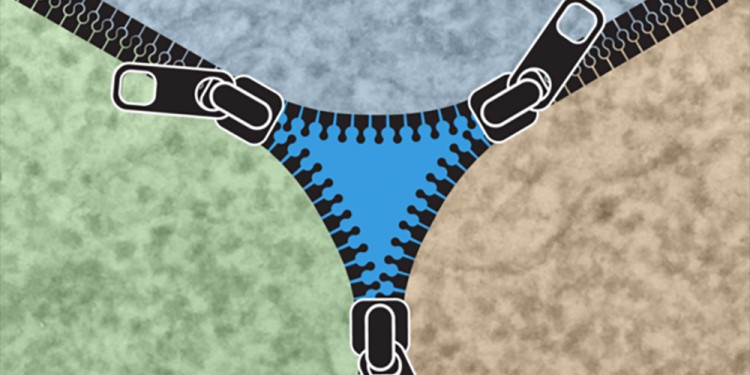
Decoded: the structure of the barrier between three cells
Organs in animals and in humans have one thing in common: they are bounded by so-called epithelial cells. These, along with the muscle, connective and nervous tissues, belong to the basic types of tissue. Epithelial cells form special connections with one another in order to prevent substances or pathogens from passing between the cells, i.e. they have a protective and sealing function for the body. Researchers at the Institute of Animal Physiology at the University of Münster have now found out how two proteins called Anakonda and M6 interact in epithelial cells in fruit flies in order to produce a functioning barrier at so-called tricellular contacts.
These corner points between three cells – so-called tricellular junctions (TCJs) – are a preferred route for migrating cells as well as for bacterial pathogens entering into the body. Although the formation of the barrier function between two epithelial cells has already been well examined, much less is known about the biology of the tricellular contacts. The working group headed by Prof. Dr. Stefan Luschnig is aiming to gain a better understanding of the structure and dynamics of epithelial barriers, hoping that this can contribute in the long term to developing more effective forms of diagnosis and treatment for example of bacterial infections or inflammation reactions. The study has been published in the journal “Current Biology”.
Background and method
TCJs play an essential role in the functioning of the barrier between epithelial cells and in the migration of cells across tissue boundaries. Special protein complexes at the tricellular contacts are responsible for the sealing properties of these structures. Despite the fundamental roles of tricellular contacts in epithelial biology, their molecular structure and the dynamics of their assembly and remodelling have so far been insufficiently understood.
In order to study this process, the researchers visualized the M6 protein in embryos of the fruit fly Drosophila with a fluorescent marker and, using a high-resolution confocal microscope, they observed the processes taking place in the tricellular contacts in the living cells. As a result of their studies, Stefan Luschnig and his team discovered that the M6 protein is responsible for keeping the Anakonda protein stable in its place at the cell membrane of the TCJs.
When the researchers removed the M6 protein, the Anakonda protein – though it still reached its destination at the cell membrane – was not anchored stably there. The consequence is a permeable tricellular junction. These and other findings led the researchers to conclude that the two proteins depend on each other and form a complex, which is of crucial importance for the stabilising properties of cell contacts and consequently for survival of the animal. “On the basis of these results obtained from the model organism Drosophila,” says Stefan Luschnig, “we can gain fundamental insights into the structure and development of epithelial tissues in more complex animals, as well as in humans.”
Funding
The study received financial support from the German Research Foundation as part of the Collaborative Research Centre 1009 – “Breaking Barriers” – which it is funding.
Original publication
Anna Wittek, Manuel Hollmann, Raphael Schleutker & Stefan Luschnig (2020): The transmembrane proteins M6 and Anakonda cooperate to initiate tricellular junction assembly in epithelia of Drosophila. Current Biology; DOI: 10.1016/j.cub.2020.08.003
